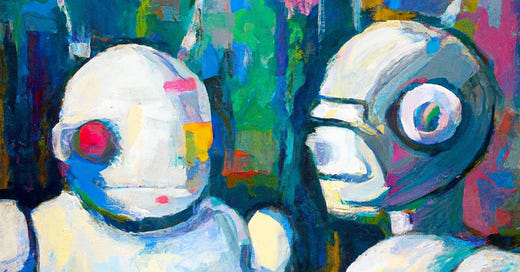Robots with a Heart: How AI and Robotics are Transforming Healthcare and Medicine
Exploring ChatGPT
As technology continues to advance at a rapid pace, the healthcare and medical industries are experiencing a significant transformation. One of the most notable developments in recent years is the integration of artificial intelligence (AI) and robotics into various aspects of patient care. These innovative solutions have the potential to revolutionize patient outcomes, making healthcare more efficient, accurate, and accessible.
In this article, we will explore the numerous ways AI and robotics are transforming healthcare and medicine, with a focus on specific examples that demonstrate the power of these cutting-edge technologies. From assisting with surgeries to providing companionship for patients, robots are proving they have a heart and a role to play in the future of healthcare.
Robotic Surgery: Precision, Accuracy, and Improved Outcomes
One of the most visible and impactful applications of robotics in medicine is in the realm of surgery. Robotic surgical systems, such as the da Vinci Surgical System, have been instrumental in improving the precision and accuracy of complex surgical procedures. By providing surgeons with enhanced visualization, increased dexterity, and greater control, these systems enable minimally invasive surgeries that result in reduced blood loss, shorter hospital stays, and faster recovery times for patients.
For example, the da Vinci Surgical System has revolutionized the way prostatectomies are performed. Traditional open surgery involves a large incision, which can lead to significant blood loss, pain, and a longer recovery period. With the da Vinci system, surgeons can perform the procedure through small incisions, resulting in a reduced risk of complications and improved patient outcomes.
AI-Powered Diagnostics: Speed and Accuracy in Disease Detection
The implementation of AI in diagnostics has significantly improved the speed and accuracy of disease detection, saving lives and reducing healthcare costs. One example is the use of AI algorithms in the analysis of medical imaging data. These algorithms can identify patterns in images that may be indicative of a specific condition, such as cancer, at a level of detail that is difficult for humans to achieve.
For instance, Google's DeepMind has developed an AI system that can detect diabetic retinopathy, a leading cause of blindness, with a 94% accuracy rate. This level of precision allows for early intervention and treatment, potentially preventing vision loss for millions of patients worldwide.
Robot-Assisted Rehabilitation: Enhancing Patient Recovery
Robots are also playing a significant role in the field of rehabilitation, helping patients recover from injuries, surgeries, and neurological conditions. Robotic exoskeletons, such as the ReWalk system, enable individuals with spinal cord injuries or paralysis to regain mobility by providing assistance in walking and maintaining balance. This not only improves the quality of life for these patients but also reduces the risk of secondary complications associated with immobility, such as pressure sores and infections.
Similarly, robotic devices like the Bionik InMotion Arm can assist stroke patients with upper limb rehabilitation. The device uses AI algorithms to adapt to the patient's abilities and provide customized therapy, promoting faster and more effective recovery.
Telemedicine Robots: Bringing Healthcare to Remote Areas
Telemedicine robots are helping to bridge the gap between healthcare providers and patients in remote or underserved areas. These robots, such as the InTouch Health RP-VITA, can facilitate video consultations between patients and specialists, enabling real-time assessment and diagnosis without the need for the patient to travel long distances.
In rural areas or developing countries with limited access to healthcare facilities, telemedicine robots can be a lifeline, providing critical care and support to patients who would otherwise be unable to receive it.
Social Robots: Providing Companionship and Support for Patients
Social robots are designed to provide companionship and support for patients, particularly those suffering from chronic conditions or mental health issues. These robots, like the Paro therapeutic robot, are often designed to resemble animals or human-like figures, creating a sense of familiarity and comfort for patients.
Paro, a robotic seal, has been used in nursing homes and hospitals to provide companionship for patients with dementia or Alzheimer's disease. The robot responds to touch, light, and sound, and can learn from its interactions with patients, providing personalized care and reducing feelings of loneliness and isolation. Research has shown that Paro can lead to a reduction in anxiety, agitation, and even the need for medication in some cases.
Another example is Mabu, a small tabletop robot developed by Catalia Health. Mabu is designed to help patients manage chronic conditions by engaging in conversations, providing medication reminders, and monitoring symptoms. The robot uses AI algorithms to tailor its interactions to each patient's specific needs, providing personalized care and support.
As AI and robotics continue to advance, their impact on healthcare and medicine will only become more profound. Robots with a heart are already making significant strides in improving patient outcomes, increasing access to care, and providing much-needed support for patients and healthcare professionals alike.
The examples discussed in this article are just a glimpse into the future of healthcare, with new innovations and applications continuously emerging. As these technologies become more integrated into the medical field, we can expect even greater benefits for patients and a transformed healthcare landscape that prioritizes precision, efficiency, and compassion.






